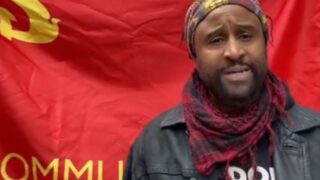Violence against Afro-Brazilian religions continued during the electoral campaign. The new President promised to act. It may be more difficult than some believe.
by Massimo Introvigne


During the last days of Brazil’s campaign for the runoff presidential election, followers of the syncretic Afro-Brazilian religion known as Umbanda congregated in Vila Guarujá of Londrina, a city located in the state of Paraná, protesting against religious intolerance. The protest followed a failed attempt to burn down the Umbanda center Cachoeirinha de Xangô by throwing at it an incendiary can. Followers of other Afro-Brazilian religions such as Candomblé also came to support the protest.
The attack against the Cachoeirinha de Xangô center was just the last one in a long list of incidents, in which centers were attacked by arsonists and Afro-Brazilian priests and priestesses were beaten.
Londrina has been studied by scholars as a particularly egregious case of intolerance against Afro-Brazilian religions. Next year, 2023, several events will celebrate the tenth anniversary of the murder of the Candomblé Mãe de Santo (priestess) Yá Mukumby (Vilma Santos de Oliveira), her mother Allial, and her 10-year-old daughter Olivia. They were assassinated on August 3, 2013, by a fanatical Pentecostal believer, who also killed his own mother who had tried to stop him before he committed his crimes.
Yá Mukumby was also a nationally-known political leader fighting for religious liberty, and her assassination made headlines throughout the country. The killer was declared mentally incompetent, which according to the Afro-Brazilian believers also dispensed the police and the court from investigating the fundamentalist Christian network promoting hate crimes against their religion through hate speech.


Londrina Afro-Brazilian devotees also claim they are harassed by the police that applies noise pollution regulations against their drums while equally noisy guitars and other instruments used in Christian churches are tolerated.
The question is obviously political. Former President Jair Bolsonaro, who lost the runoff election by a narrow margin to left-wing candidate Luiz Inácio Lula da Silva, stated in a speech in Campina Grande, Paraíba: “We are a Christian country, God above everything! There is no such thing as a secular state, Brazil is a Christian state! Let’s make a Brazil for the majorities! The minorities have to bow down to the majorities! The law must exist to protect the majorities! The minorities should adapt or simply disappear!”
These inflammatory speeches pleased a sizeable number of Protestant fundamentalist Christians. Polls taken before the elections showed that Bolsonaro could count on 62% of the Evangelical vote, against 31% of Lula. In turn, Lula was supported by 55% of the Brazilian Catholics; 38% supported Bolsonaro. Of course, there were also significant minorities of conservative pro-Bolsonaro Catholics and liberal pro-Lula Protestants.
Lula visited Umbanda and Candomblé centers during the campaign, which was used by Bolsonaro’s supporters (including the former president’s wife) to claim that the left-wing candidate was supporting “Satanic” religions and offending Christianity.
Lula gave several speeches on religious liberty, although in his examples he insisted more on the attacks by fundamentalist Protestants against Catholic buildings, institutions and prelates, which are also a feature of the complicated Brazilian religious landscape. In an electoral meeting with Catholic priests and nuns in São Paulo, Lula blamed the Evangelicals for having converted “a country of joy, Carnival, soccer, music, and dances” into a “world’s capital of hate.”
Will Lula protect not only the Catholics but also the devotees of the Afro-Brazilian religions and other groups labeled as “cults” from religious intolerance? The question is more complicated that it may seem. As scholars Cláudia Neves Silva and Fábio Lanza noted in their case study of the city of Londrina, religious intolerance in Brazil has three different roots.
Despite the prevalence of liberal bishops who preach interreligious dialogue, there is still a minority of Catholics who regard non-Catholic religions as evil and Afro-Brazilian priests and priestesses as agents of Satan. While sometimes discriminates by Catholics, Evangelicals and Pentecostals are largely responsible for violence against Afro-Brazilian religions and intolerance against the Jehovah’s Witnesses and other minorities they regard as “heretic;” the most fundamentalist fringes exhibit a militant hatred against Catholicism as well.


Finally, a third and often ignored component of religious intolerance is the left-wing and Marxist tradition regarding Afro-Brazilian religions as expression of a reactionary and irrationalist form of superstition, and other “cults” as infiltrated into Brazil by the United States to create a competition against the liberal and leftist Catholic hierarchy. Cláudia Neves Silva and Fábio Lanza quote the precedent of the “enlightened” Brazilian Republic of the late 19th century that, while limiting the power of Catholicism and granting religious liberty to the Protestants, included in its Criminal Code of 1890 provisions against “superstition” that were aimed at harassing the Afro-Brazilian religions.
As I have discussed elsewhere, statistics on whether there are more Protestants or Catholics in Brazil are themselves political. Polls and censuses still show a Catholic (51%) majority against an important (31%) Protestant minority. However, sociologists caution that if religious practice, as opposite to answers in polls and census questionnaires, is considered, the situation may be different, as many who call themselves Catholics almost never go to Mass.
Lula surely knows that he should keep a dialogue open at least with the more moderate Evangelicals, not to mention the fact that supporters of Bolsonaro continue to control local governments in several states. There is no reason to doubt Lula’s good intentions about religious liberty, but while modifying some laws he did not eradicate intolerance during his previous mandates as president. Within his own electoral base, both Catholic and left-wing (and Catholic-left-wing), there are different sensitivities and attitudes to religious minorities, not all of them tolerant.








